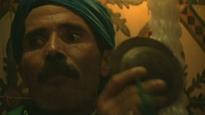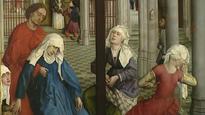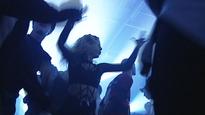DE KLEUREN VAN DE GEEST
De kleuren van de geest (The colours of the mind) was broadcasted on October 28th 1997. It is the last Cornelis programme for the BRT. It's a fresh and penetrating visual essay about trance (music), iconography and disembodiment along our history. Cornelis wanders through epochs and regions, cultures and artistic practices. He refers to, for example, old prints with horrifying spiders and tunes as antidote to their bites, as well as to the European paintings of the 15th and the 16th century that depict Moorish dances, the Southern Italian Tarantella or the Northern African Gnawa music.
In some of these representations, colours depict psychological problems – such as possession, stress, depression, and anxiety – that must be dispelled. In other instances, colours are codes for mental states: for instance, white stands for the punishing right-mindedness, green for the pure belief and the mystical wanderers, red for rage. Through the music, performers of folk dances are able to experience all these mental states in their souls, minds or bodies, without having to resort to reason. Their rural bodies enter a cosmic network.
Is there a link between contemporary electronic dance music and the various kinds of healing rituals that are inherent to traditional folk dances? In the Nineties, Trance music – the term “trance” refers in this instance to a state of hypnotism and heightened consciousness – was a genre of electronic music that arose as an international phenomenon. It seems that attempts are made to breathe new life into the ancient art of healing making use of innovative technological equipment. All in all, the ancient European dances, the still active North-African esoteric systems and the recent techno rituals are expressions of a single desire: being possessed. In some way, today dancing becomes once again a way to abandon the body and to link the mind to a ‘Greater Unity’.



- Format Digital Betacam(Digital Betacam)
- Color system PAL
- Color col.
- Year 1997
- Duration 00:42:39
- Languageinfo
Subtitles: English UK
Spoken: Dutch/ Flemish
-
Artists
-
EVENTS